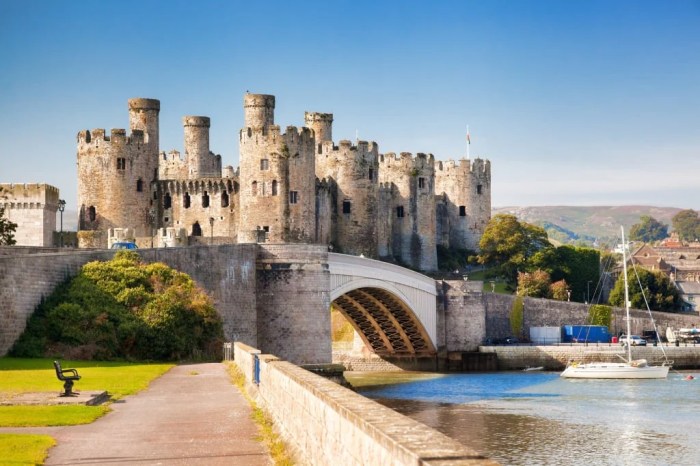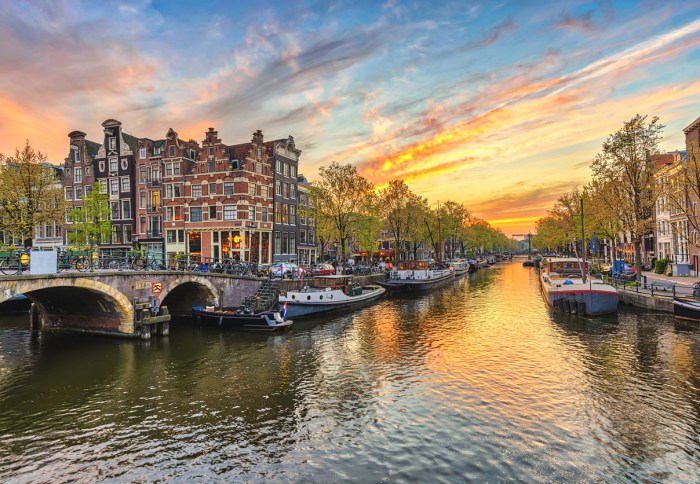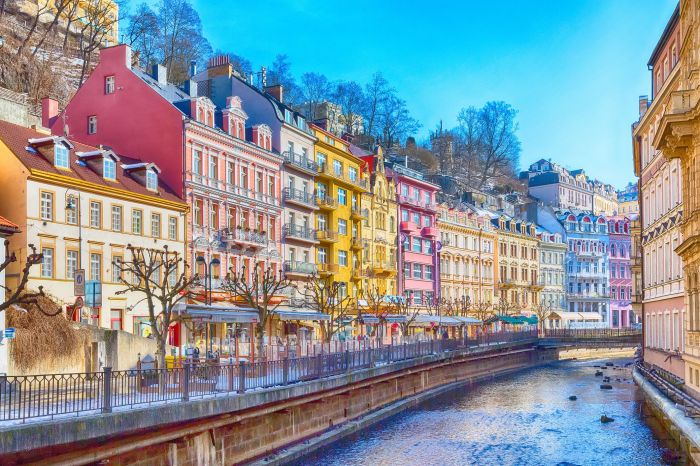Top 10 Medieval Places To Visit In Europe
Top 10 Medieval Places To Visit In Europe: Imagine stepping back in time, walking through cobblestone streets lined with ancient castles and grand cathedrals, feeling the echoes of knights and kings. This journey through medieval Europe isn’t just about history, it’s about experiencing the magic of a bygone era firsthand.
From towering fortresses guarding secrets of the past to bustling medieval cities that once thrived as centers of trade and culture, Europe offers a captivating tapestry of medieval wonders. Get ready to discover the stories etched into every stone, the legends whispered on the wind, and the enduring spirit of a time that continues to fascinate us today.
This list dives into the heart of medieval Europe, highlighting ten must-see destinations that showcase the rich tapestry of history, architecture, and culture that defines this era. We’ll explore castles that stand as testaments to the power of medieval rulers, religious sites that reflect the faith of the time, and cities that buzzed with life centuries ago.
Join us as we journey through this incredible era, uncovering hidden gems and rediscovering the magic of medieval Europe.
Introduction

The Middle Ages, spanning roughly from the 5th to the 15th centuries, were a pivotal period in European history. This era saw the rise of powerful kingdoms, the flourishing of art and architecture, and the development of new technologies and ideas.
Exploring medieval Europe offers a unique glimpse into a fascinating world, where chivalry, religion, and innovation shaped daily life.The places featured in this list are not only visually stunning but also offer valuable insights into medieval life and culture. These locations provide tangible evidence of past civilizations, allowing us to understand the social, political, and religious structures of the time.
Criteria for Selection
The top 10 medieval places were selected based on several criteria:
- Historical Significance:These locations played a crucial role in shaping medieval history, serving as centers of power, religious devotion, or cultural innovation.
- Preservation:The sites have been well-preserved, offering a glimpse into the past that remains largely intact.
- Architectural Value:These places boast impressive medieval architecture, ranging from majestic cathedrals to fortified castles.
- Cultural Significance:These locations represent a significant part of European cultural heritage and continue to inspire and captivate visitors.
- Accessibility:The sites are easily accessible to tourists and offer a range of visitor amenities.
Castles and Fortifications
Castles and fortifications are ubiquitous across Europe, standing as testaments to the continent’s rich and often tumultuous history. These imposing structures served not only as residences for powerful lords and monarchs but also as vital defensive strongholds against invaders and rivals.
Their architectural styles, defensive features, and historical significance offer a glimpse into the political, social, and military landscapes of medieval Europe.
Castles and Fortifications of Medieval Europe
The following table provides a brief overview of some of the most notable castles and fortifications in Europe, highlighting their key features and historical significance:
| Place | Country | Key Features | Historical Significance |
|---|---|---|---|
| Château de Chambord | France | A grand Renaissance-style castle known for its intricate architecture, numerous towers, and elaborate spiral staircases. It features a distinctive double-helix staircase, a masterpiece of Renaissance engineering. | Built in the early 16th century by King Francis I, Chambord was a symbol of royal power and prestige. It served as a hunting lodge and a place for the king to entertain guests. |
| Conwy Castle | Wales | A well-preserved medieval castle built by King Edward I of England in the late 13th century. It is known for its impressive concentric design, with multiple walls and towers offering layers of defense. | Conwy Castle played a crucial role in the conquest of Wales by England. It was used as a base for military operations and a symbol of English dominance in the region. |
| Prague Castle | Czech Republic | One of the largest ancient castles in the world, it has been a seat of power for centuries. It boasts a rich architectural history, featuring Romanesque, Gothic, Renaissance, and Baroque elements. | Prague Castle has served as the residence of Czech kings and presidents for over a millennium. It has witnessed numerous historical events, including the coronation of Holy Roman Emperors and the signing of the Prague Accords. |
| Edinburgh Castle | Scotland | A historic fortress perched atop an extinct volcano, Edinburgh Castle has been a strategic stronghold for centuries. It features a range of architectural styles, including a 16th-century palace and a 19th-century military barracks. | Edinburgh Castle played a vital role in Scottish history, serving as a royal residence, a military base, and a symbol of Scottish independence. It was besieged and captured numerous times throughout its history. |
Castles and fortifications played a crucial role in medieval society. They provided protection from invaders, served as centers of administration, and symbolized the power and authority of their owners. The design and construction of these structures reflected the technological advancements and military strategies of the time.
Religious Sites
Europe boasts a rich tapestry of religious sites, each holding centuries of history and architectural marvels. These sites, often cathedrals, abbeys, and churches, serve as testaments to the profound impact of religion on European culture and identity. They stand as enduring symbols of faith, artistic expression, and historical significance.
Cathedrals and Their Architectural Styles
Cathedrals are among the most prominent religious buildings in Europe. Their grandeur and architectural styles reflect the evolution of religious beliefs and artistic trends over centuries.
- Gothic Cathedrals:These cathedrals, characterized by soaring pointed arches, stained-glass windows, and intricate flying buttresses, emerged in the 12th century. The Notre Dame Cathedral in Paris, the Cologne Cathedral in Germany, and the Chartres Cathedral in France are iconic examples of Gothic architecture.
They are renowned for their soaring heights, intricate details, and abundant use of light. The soaring arches and stained-glass windows create a sense of awe and spirituality, inviting visitors to contemplate the divine.
- Romanesque Cathedrals:Predating Gothic architecture, Romanesque cathedrals, like the Durham Cathedral in England, are characterized by thick walls, rounded arches, and sturdy pillars. These structures were built for defense and stability, reflecting the turbulent times of the Middle Ages. They often feature elaborate carvings and sculptures, showcasing the craftsmanship of the era.
If you’re looking to travel back in time, a trip to Europe is a must! There are so many amazing medieval castles, cathedrals, and towns to explore. You could start with a Top 10 list, but if you really want to get your medieval fix, check out the Top 25 Medieval Places To Visit In Europe – it’s seriously a great resource.
After you’ve got your list of places to visit, you can start planning your trip – just be sure to pack your sense of adventure!
- Byzantine Churches:The Hagia Sophia in Istanbul, Turkey, is a prime example of Byzantine architecture. These churches are characterized by their dome-shaped roofs, ornate mosaics, and intricate frescoes. They often feature a central dome supported by pillars, creating a sense of grandeur and spirituality.
The use of mosaics and frescoes in Byzantine churches was a distinctive feature, showcasing the skill of Byzantine artists and the influence of Eastern religious traditions.
Abbeys and Their Role in Medieval Life
Abbeys played a vital role in medieval society, serving as centers of learning, religious devotion, and agricultural production. These monastic communities often housed vast libraries, scriptoria, and workshops, contributing significantly to the preservation and dissemination of knowledge.
- Cluny Abbey:Located in Burgundy, France, Cluny Abbey was once the largest and most influential abbey in Western Europe. Founded in the 10th century, it was renowned for its architectural grandeur and its role in promoting the Benedictine monastic order. The abbey’s vast complex included a magnificent church, cloisters, and numerous outbuildings, showcasing the wealth and influence of the monastic order.
- Westminster Abbey:This iconic abbey in London, England, is a testament to the enduring power of religion and its connection to royal authority. It has served as the coronation church for English monarchs since 1066 and is the burial place of many historical figures.
The abbey’s architectural style has evolved over centuries, reflecting the changing tastes and influences of different periods.
Churches and Their Local Significance, Top 10 Medieval Places To Visit In Europe
Churches, often smaller and less grand than cathedrals, played a crucial role in the lives of ordinary people during the Middle Ages. They served as centers of community, providing a place for worship, education, and social gatherings.
- St. Peter’s Basilica:Located in Vatican City, St. Peter’s Basilica is one of the largest and most important churches in the world. It is the heart of the Catholic Church and the burial place of St. Peter, the first pope. The basilica’s architectural style is a blend of Renaissance, Baroque, and Neoclassical elements, showcasing the evolution of architectural styles over centuries.
- Chartres Cathedral:This magnificent cathedral in France is renowned for its soaring Gothic architecture and its intricate stained-glass windows. It is dedicated to the Virgin Mary and is considered one of the finest examples of Gothic architecture in Europe. The cathedral’s stained-glass windows depict scenes from the Bible and the lives of saints, creating a breathtaking spectacle of light and color.
Cities and Towns
Medieval Europe was not just about grand castles and imposing cathedrals. It was also a time of bustling cities and towns, centers of trade, crafts, and cultural life. These urban centers played a crucial role in the development of medieval society, shaping its economy, politics, and social fabric.
Let’s explore some of the most captivating medieval cities and towns that still captivate travelers today.
Medieval Cities and Towns
Medieval cities and towns were often characterized by their unique layouts, prominent landmarks, and economic activities. These urban centers played a vital role in medieval trade, politics, and social life. They served as hubs for commerce, centers of political power, and focal points for cultural and intellectual exchange.
| City/Town | Country | Key Features | Historical Significance |
|---|---|---|---|
| Rothenburg ob der Tauber | Germany | Preserved medieval walls, cobblestone streets, half-timbered houses, and the iconic Plönlein (a small, triangular square) | A prominent member of the Hanseatic League, a medieval trade association, Rothenburg ob der Tauber flourished as a center for trade and commerce. Its well-preserved medieval architecture offers a glimpse into the past. |
| York | England | York Minster (a magnificent Gothic cathedral), the Shambles (a historic street with timber-framed buildings), and the York City Walls (a well-preserved medieval fortification) | York was a major Roman city and later a significant center of Viking culture. Its strategic location and its role as a major trading hub made it a prosperous and influential city during the Middle Ages. |
| Florence | Italy | The Duomo (Florence Cathedral), the Ponte Vecchio (a medieval bridge with shops), and the Uffizi Gallery (housing a world-renowned collection of Renaissance art) | Florence was a leading center of the Renaissance, a period of artistic, cultural, and intellectual flourishing. The city’s wealth and patronage of the arts made it a hub for creativity and innovation. |
| Prague | Czech Republic | Prague Castle (a sprawling complex of palaces, churches, and gardens), the Charles Bridge (a historic bridge with statues), and the Old Town Square (a vibrant public space with the iconic Astronomical Clock) | Prague was a major center of trade and commerce during the Middle Ages. Its strategic location and its role as a royal city made it a powerful and influential center. |
Archaeological Sites
Unearthing the past, Europe is a treasure trove of archaeological sites that offer a glimpse into the lives and civilizations of the medieval period. These sites, ranging from ancient settlements to monastic complexes, provide invaluable insights into the daily lives, beliefs, and technologies of medieval societies.
Medieval Settlements and Urban Life
Archaeological sites offer a window into the evolution of medieval settlements and urban life. Excavations reveal the physical structures, layout, and daily activities of medieval communities.
- York, England:York’s Viking and medieval archaeological remains showcase the city’s development from a Viking trading center to a flourishing medieval city. The JORVIK Viking Centre offers a fascinating interactive experience of Viking-age York, while excavations have uncovered Roman, Viking, and medieval remains, including the remains of a Roman bathhouse and a Viking street.
These findings reveal the city’s transformation over centuries, highlighting the impact of trade, conquest, and cultural exchange on urban development.
- Ljubljana, Slovenia:Ljubljana’s medieval Old Town is a testament to the city’s rich history, with archaeological evidence revealing the evolution of the settlement from Roman times through the Middle Ages. Excavations have unearthed Roman walls, medieval houses, and a Roman amphitheater, showcasing the city’s continuous development over centuries.
These findings provide valuable insights into the urban planning, architecture, and social structures of medieval Ljubljana.
- Dublin, Ireland:Dublin’s archaeological sites offer a glimpse into the city’s Viking and medieval past. The Dublinia museum showcases the city’s Viking origins, while excavations have unearthed medieval houses, workshops, and a 12th-century church, providing insights into the daily lives of medieval Dubliners.
These findings highlight the city’s role as a major trading center and the impact of Viking and Norman influences on its development.
Museums and Collections: Top 10 Medieval Places To Visit In Europe
Medieval Europe left behind a rich legacy of art, artifacts, and cultural practices. To understand this era, exploring museums and collections that showcase these treasures is essential. These institutions offer a glimpse into the lives, beliefs, and achievements of people who lived centuries ago.
Museums and Collections of Medieval Europe
These museums offer a diverse range of exhibits that illuminate the art, culture, and history of medieval Europe.
| Museum | Country | Key Collection | Notable Exhibits |
|---|---|---|---|
| The British Museum | United Kingdom | Medieval European art and artifacts | The Lewis Chessmen, a set of 93 chess pieces, carved from walrus ivory, dating back to the 12th century. |
| The Louvre Museum | France | Medieval European art and sculpture | The Virgin and Child with Saint Anne, a painting by Leonardo da Vinci, depicts the Virgin Mary holding the infant Jesus, with Saint Anne behind them. |
| The Metropolitan Museum of Art | United States | Medieval European art and decorative arts | The Cloisters, a branch of the Metropolitan Museum, houses a collection of medieval art and architecture, including the Unicorn Tapestries. |
| The National Museum of Denmark | Denmark | Viking and medieval artifacts | The Golden Horns, a pair of large drinking horns, decorated with intricate gold leaf, dating back to the 4th century AD. |
| The Victoria and Albert Museum | United Kingdom | Medieval European art and design | The Waddesdon Manor, a Rothschild estate, features a collection of medieval and Renaissance art, furniture, and decorative objects. |
| The Kunsthistorisches Museum | Austria | Medieval European art and decorative arts | The Treasure Chamber, a collection of medieval gold and silver objects, including the Imperial Crown of the Holy Roman Empire. |
Medieval Festivals and Events
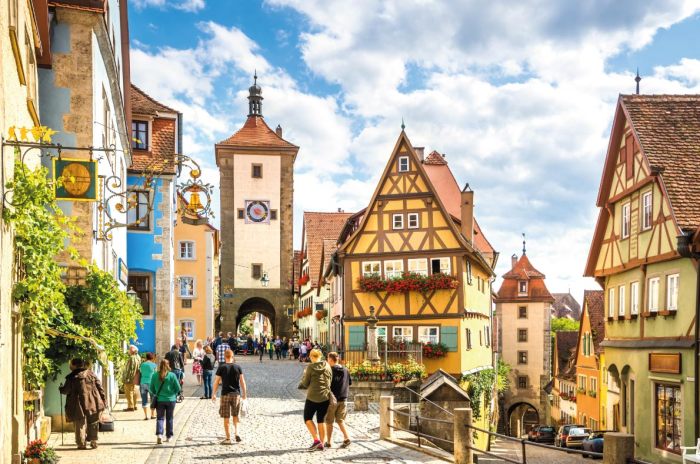
Medieval festivals and events offer a captivating glimpse into the rich history and vibrant culture of Europe’s past. These celebrations, often rooted in religious observances, agricultural cycles, or historical commemorations, provide a unique opportunity to experience the spirit of the Middle Ages firsthand.
Medieval Festivals and Events in Europe
Medieval festivals and events are held throughout Europe, offering a chance to step back in time and immerse oneself in the sights, sounds, and traditions of the Middle Ages. These events often feature elaborate costumes, historical reenactments, traditional music and dance, medieval crafts, and delicious food and drink.
- The Medieval Festival of the Knights, Germany:Held annually in the town of Kaltenberg, this festival features jousting tournaments, medieval markets, and a variety of entertainment. Visitors can dress up in medieval costumes and participate in activities such as archery, sword fighting, and falconry. The festival is a celebration of chivalry and medieval life, offering a glimpse into the world of knights and nobles.
- The Medieval Festival of Carcassonne, France:Held in the fortified city of Carcassonne, this festival features a parade of knights, historical reenactments, medieval music and dance, and a lively medieval market. Visitors can explore the city’s ramparts, visit the medieval castle, and experience the vibrant atmosphere of a medieval city.
The festival is a celebration of the city’s rich history and its role in medieval France.
- The Medieval Festival of Tallinn, Estonia:Held in the historic city of Tallinn, this festival features a medieval market, historical reenactments, traditional music and dance, and a variety of crafts. Visitors can explore the city’s medieval streets, visit the city’s churches and museums, and enjoy the festive atmosphere of a medieval city.
The festival is a celebration of Tallinn’s medieval heritage and its role in the Hanseatic League.
- The Medieval Festival of Stratford-upon-Avon, England:Held in the birthplace of William Shakespeare, this festival features a variety of medieval activities, including jousting tournaments, a medieval market, and a Shakespearean play. Visitors can explore the town’s historic streets, visit Shakespeare’s birthplace, and enjoy the festive atmosphere of a medieval town.
The festival is a celebration of the town’s rich history and its association with Shakespeare.
- The Medieval Festival of Siena, Italy:Held in the historic city of Siena, this festival features the famous Palio horse race, a parade of medieval costumes, and a variety of medieval entertainment. Visitors can explore the city’s historic center, visit the city’s churches and museums, and enjoy the festive atmosphere of a medieval city.
The festival is a celebration of the city’s rich history and its role in medieval Italy.
These events provide insights into medieval customs and entertainment. For example, the jousting tournaments at the Medieval Festival of the Knights in Germany offer a glimpse into the importance of chivalry and warfare in medieval society. The medieval market at the Medieval Festival of Carcassonne in France provides a glimpse into the daily life of medieval people, showcasing the crafts and goods that were available in the Middle Ages.
The historical reenactments at the Medieval Festival of Tallinn in Estonia offer a chance to see how medieval people lived, worked, and fought. And the Shakespearean play at the Medieval Festival of Stratford-upon-Avon in England offers a glimpse into the literary and cultural life of the Middle Ages.
Travel Tips
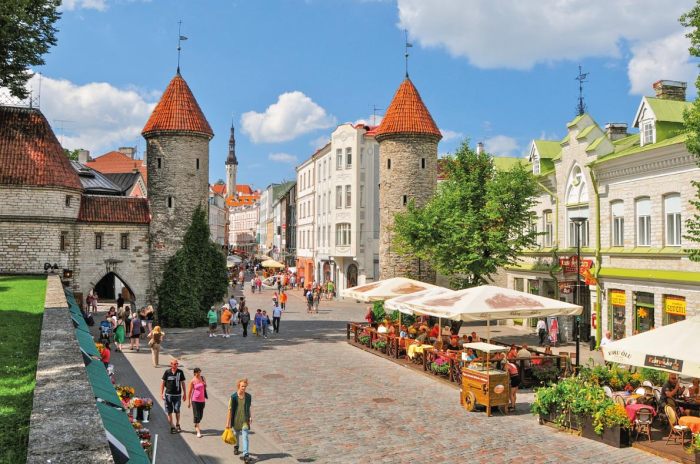
Planning a trip to explore medieval Europe can be an exciting adventure. To make your journey as smooth and enjoyable as possible, consider these practical tips for navigating these historic destinations.
Transportation
Transportation is a crucial aspect of exploring medieval Europe. While some sites are easily accessible by public transportation, others may require more planning.
- Trains:Europe’s extensive rail network is a fantastic option for traveling between cities and towns. High-speed trains like Eurostar and Thalys offer comfortable and efficient journeys. Consider purchasing rail passes for cost-effective travel if you plan to visit multiple destinations.
- Buses:Buses are a more budget-friendly alternative to trains, particularly for shorter distances. Companies like Flixbus and Eurolines provide frequent services across Europe. Be aware that bus travel can be longer than train journeys.
- Cars:Renting a car offers flexibility for exploring areas not easily accessible by public transportation. However, consider traffic congestion, parking limitations, and tolls in major cities. Driving in Europe can be challenging for those unfamiliar with local rules and regulations.
- Flights:For longer distances or traveling between countries, flights can be a convenient option. Budget airlines like Ryanair and EasyJet offer affordable fares but may have additional fees for baggage and seat selection. Research airlines and compare prices before booking.
Accommodation
Medieval Europe offers a wide range of accommodation options to suit different budgets and preferences.
- Hotels:From luxury hotels to budget-friendly options, hotels provide comfortable and convenient accommodation. Consider booking in advance, especially during peak season, to secure the best rates and availability.
- Guest Houses and B&Bs:For a more intimate experience, guest houses and bed and breakfasts offer charming accommodations and often include breakfast. They provide a unique opportunity to interact with locals and learn about the area’s history and culture.
- Apartments and Vacation Rentals:Apartments and vacation rentals offer more space and flexibility, particularly for families or groups. They can be more affordable than hotels and allow for self-catering, providing a more authentic experience.
- Hostels:Hostels are budget-friendly options for solo travelers and backpackers. They offer shared dormitory rooms and common areas for socializing with other travelers. Hostels are often located in central areas, providing easy access to attractions.
Travel Tips
Here are some additional tips for navigating medieval destinations in Europe:
- Plan Ahead:Research the destinations you plan to visit and book accommodations and transportation in advance, especially during peak season. This will help ensure you get the best rates and availability.
- Pack Appropriately:Pack comfortable walking shoes, as you’ll be doing a lot of exploring. Layer your clothing for varying weather conditions, and bring a small backpack for essentials like water, snacks, and a map.
- Learn Basic Phrases:While English is widely spoken in major cities, learning a few basic phrases in the local language can enhance your travel experience. It shows respect for the culture and can make communication easier.
- Be Aware of Local Customs:Be respectful of local customs and traditions. Dress modestly when visiting religious sites, and be mindful of noise levels in public areas.
- Take Advantage of Free Activities:Many medieval destinations offer free or low-cost activities, such as walking tours, historical reenactments, and public events. Research these options to maximize your experience and save money.
- Enjoy the Local Cuisine:Savor the flavors of medieval Europe by trying local specialties. From hearty stews to delectable pastries, there’s something for everyone. Don’t be afraid to venture beyond the tourist traps and discover hidden gems.
- Embrace the Culture:Immerse yourself in the local culture by attending festivals, concerts, or theatrical performances. These events offer a unique glimpse into the history and traditions of the region.
Contemporary Relevance
The Middle Ages, often perceived as a period of darkness and superstition, continue to exert a profound influence on modern society. From the majestic castles that dot the European landscape to the enduring principles of chivalry and courtly love, the echoes of medieval Europe resonate in our contemporary world.
This enduring legacy is evident in various aspects of modern culture, including art, architecture, literature, and philosophy.
If you’re looking for a trip back in time, there are tons of amazing medieval spots to check out in Europe. You could visit castles, cathedrals, and even whole towns that have stood for centuries. But if you want to experience a different kind of medieval vibe, you should definitely check out the Netherlands.
Top 10 Places To Visit in The Netherlands has a rich history and some really cool architecture, and you can find a ton of medieval-era stuff there too. Whether you’re into history or just want to explore a new place, the Netherlands has something for everyone.
Medieval Art and Architecture
Medieval art and architecture continue to inspire artists and architects today. The intricate details, soaring arches, and stained-glass windows of Gothic cathedrals, for example, are a testament to the ingenuity and artistry of medieval artisans. The iconic Notre Dame Cathedral in Paris, despite the recent fire, remains a symbol of the enduring power of medieval architecture.
Its intricate carvings, stained-glass windows, and soaring spires continue to captivate visitors from around the world. The influence of medieval architecture is also evident in modern buildings, such as the Houses of Parliament in London, which were inspired by the Gothic style.
Medieval Literature and Philosophy
Medieval literature, with its tales of chivalry, courtly love, and epic quests, continues to captivate readers today. The works of Chaucer, Dante, and Shakespeare, all of whom were influenced by medieval themes and ideas, are still widely read and studied.
The stories of King Arthur and his knights, for example, continue to be adapted and reinterpreted in modern media, from films and television shows to video games and novels. The Arthurian legend embodies the ideals of chivalry, honor, and justice, which remain relevant in modern society.
Medieval philosophy, with its emphasis on reason and logic, also laid the groundwork for modern scientific thought. The works of philosophers such as Thomas Aquinas and Saint Augustine, who explored the relationship between faith and reason, continue to be studied and debated today.
Their ideas have influenced the development of modern philosophy, theology, and political thought.
If you’re into castles, cathedrals, and cobblestone streets, then you’ll definitely want to check out the Top 10 Medieval Places To Visit In Europe. But, if you’re looking for a broader list of the best places to visit in Europe, then you should definitely check out Top 10 Places To Visit In Europe.
You can then mix and match your medieval and modern European adventures!
Conclusion
From towering castles to magnificent cathedrals, Europe is a treasure trove of medieval history and culture. Exploring these destinations offers a glimpse into a bygone era, allowing you to experience the rich tapestry of medieval life, architecture, and traditions. Whether you’re captivated by the grandeur of medieval castles, the spiritual beauty of religious sites, or the vibrant atmosphere of medieval towns, Europe has something to offer every traveler.
The Enduring Legacy of the Middle Ages
The Middle Ages, often referred to as the Dark Ages, were a period of significant transformation and innovation. While often associated with warfare and religious fervor, this era also saw advancements in architecture, art, literature, and science. By visiting these medieval places, you can gain a deeper understanding of the complexities of this era and appreciate its lasting impact on European society and culture.
The legacy of the Middle Ages is evident in the art, architecture, language, and traditions of modern Europe. It’s a reminder that the past continues to shape the present and inspires us to explore and learn from history.
Conclusion
As you wander through these medieval marvels, you’ll not only see history come to life but also feel the echoes of the past. The grandeur of the castles, the serenity of the religious sites, and the vibrancy of the medieval cities will transport you to a different time, allowing you to understand the complexities of medieval life.
So, pack your bags, embrace the spirit of adventure, and prepare to be captivated by the enduring legacy of medieval Europe. The journey awaits, and the stories are just waiting to be discovered.
Detailed FAQs
What is the best time of year to visit medieval places in Europe?
The best time to visit depends on your preferences. Spring and autumn offer pleasant weather and fewer crowds, while summer is ideal for outdoor activities and festivals. Winter can be magical, especially for Christmas markets, but be prepared for colder temperatures.
How much does it cost to travel to medieval places in Europe?
The cost varies depending on your travel style, accommodation choices, and activities. Budget-friendly options include hostels, self-catering apartments, and exploring free attractions. For a more luxurious experience, consider upscale hotels and guided tours.
What are some must-try foods in medieval Europe?
Medieval cuisine was simple yet hearty. Try traditional dishes like roasted meats, stews, bread, cheese, and local wines. Many regions have unique specialties, so explore the local culinary scene.
